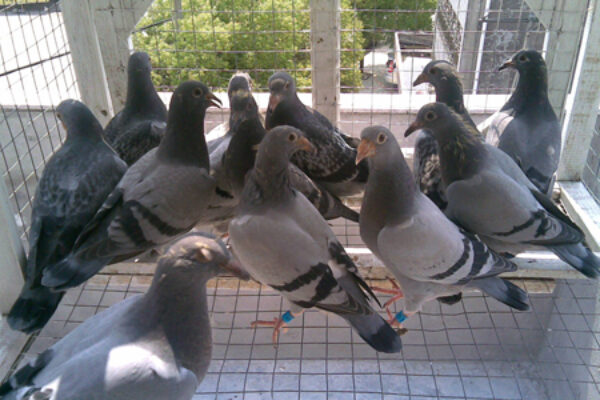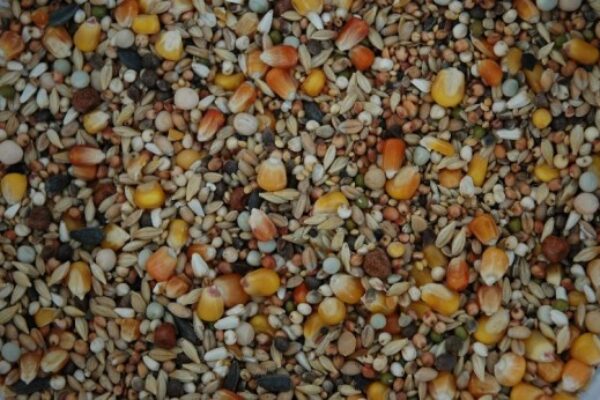Article Provided by Bob Prisco
 In both the racing and breeding loft the true value of a pigeon will be found only by actual results (good and bad), either by flying or by the quality of the young it produces. If a bird cannot help you to improve your results in the flying or breeding loft, it is of no value to you and you should cull it.
In both the racing and breeding loft the true value of a pigeon will be found only by actual results (good and bad), either by flying or by the quality of the young it produces. If a bird cannot help you to improve your results in the flying or breeding loft, it is of no value to you and you should cull it.
Remember, you must stay focused on your goals. There are only two kinds of birds: GOOD ONES that can help you improve and BAD ONES that will cost you time, money and aggravation with negative results. When deciding to cull or cut back, forget all about names, fancy pedigrees, strains, cost, feelings (yours or others); just look at the results. IF THE BIRD CAN HELP YOU MOVE AHEAD AND IMPROVE YOUR RESULTS, IT STAYS, IF NOT IT GOES. NO EXCUSES OR SECOND CHANCES, CULL IT.
I know there will be an occasional bird that you will cull that could of helped you, but believe me you will cull 99 bad ones for every 1 you should have kept if you cull hard based strictly on results.
To purchase flying kits or potential breeders always seek out lofts with the same goals as yours and recent good results. Request birds with the types of qualities you are looking for to improve your own loft. Many famous fanciers and strains are known for specific performance, such as short distance specialists, middle distances, long distances, etc. These fanciers have developed their birds to adapt to their style of training, conditions in their area, and distances in which they wish to compete, whether it is old birds, young birds or both. These birds are specialty birds that excel at specific distances and conditions. They can be a great help to improve your loft in ares where you are not having success.
Remember, if you are looking for long distance bloodlines to improve your race results, you do not buy a family of birds famous for its sprint or short distance ability. I know this sounds silly and foolish to mention, but many times fanciers buy birds because of their popularity and fame, not their known proven ability. This leaves them with little chance to improve their own birds if they introduce the wrong birds into their lofts.
I have always believed in the basic principles of genetics, “Heredity is handed down from one generation to the next”, and “Likes breed likes”. Thus, to breed for speed birds you should breed speed to speed. If you are looking for long distance birds, you breed distance birds to distance bloodlines. However, there is one other factor, quality or trait that seems to be very noticeable in racing pigeons that fanciers sometimes ignore in their breeding program, that being “TOUGH WEATHER BIRDS”. Whether the races are short or long, some birds possess the ability to fly successfully in all kinds of conditions and weather. Others are only successful when conditions are perfect and fast. This toughness quality is a very important characteristic that you should look for and breed for at any distance when selecting breeders. Cull those birds that do not possess this toughness or produce it in their children.
BRIEF SUMMARY: CULL MEANS REGARDLESS OF BLOODLINES, STRAINS, COST OR ORIGIN, YOU MUST ELIMINATE ALL BIRDS FROM THE RACE TEAM OR BREEDING LOFT THAT ARE GIVING YOU BAD RESULTS AND PREVENTING YOU FROM IMPROVING.
Cull any birds that are not of superior health and any breeders that do not produce strong, healthy young. Cull any birds if they are hard to settle and manage. Cull any birds that do not loft fly and train easily. Cull any birds that cannot keep up with the rest of the team and appear to have no excuse for being late. Check your records, if this is a common problem with several birds from a particular pair, then they must go. Cull any pair in which you have heavy losses each year or poor homing ability. Cull any flyers that after 2 years have not finished consistently in the top 10% of their races. Cull any pair that has not produced good racers even though their young are not lost. Cull all birds that cannot handle the tough races, regardless of the distance. Cull all birds with poor recovery periods that cannot race over 50% of the race schedule.
As you cull and eliminate birds, you look to keep and breed from the best. Three or four pair of proven stock birds can take a fancier a long way in a race season and many through years to come. THE OLD SAYING “QUALITY IS BETTER THEN QUANTITY” IS DEFINITELY TRUE WITH RACING PIGEONS. The only way to achieve the quality and results you need is to set your goals, stay focused on those goals and cull all birds that cannot help you attain your goals and desired results.









Simple and clear on the culling, may be hard to practice on but it is very helpful advice. Thanks!
I would like to read and hear more of this mans advice it makes so much sense. He reminds me of someone who did a 50 mile first toss then if they survived this, he rested them for while. The moral of the story, this tells you what future your pigeon has. You could say to be cruel to be kind. Yeah I would like to be put in contact with the author of this article if anyone has the details.
I ve read several articles that say culling is the best way to get rid of unwanted pigeons. I agree to some extent… I myself love my birds and at sometimes have keep to many young and/or old birds. But that is just me…..I know that others cant do that so they get rid of the birds they dont want….if i see a bird that is sick…I cull it…..I also cull birds I dont like…I have had Jensens in my loft and have bred them into my birds….my birds are also strong with sion and sion stassart crosses bred down from Chas Hietzman bloodline….I have a body type that I like and stay to that type…most of my birds are red ash, as the Hietzman birds were redash… the jennsons were blue check….but the red is strong so it override the blue….but the blues I get are just as nice as my reds….I also have a strain of Almond colored birds that I produced just for the color ,and they carry much of the same blood as the reds….and at times I have too many of each group….But as I said I love my birds….so ususally have too many…..and sometimes there is problem with getting rid of unwanted birds…..what bothers me is that when you read that you should cull unwanted birds, the writer never says how to get rid of them…..maybe make “PIGEON PIES”…..or help out a new fancier…maybe….just kill them…and get a call from PETA……maybe…but I think one of the ways they get rid of them is a fall birds sales….when you go there….you see hundreds of birds for sale….at premium prices…..and those salers will tell you that they have won with these birds and they are the best you can get, win everytime….remember you know you cant fly them as they will want to go home, and not your home….I seem a nice blue grizzle cock I liked and when he told me 250….I thought me meant $2.50…no it was $250.00….remember this was his cull he s selling….no I didnt by it…..Im not that stupid…they have birds that didnt produce well for them…think they ll do any better for you….remember there is a reason for every bird that is for sale…and it becomes,”BUYER BEWARE”…..I know , Ive been had by these people….So what I saying is…if they cull this way, and saying that these are the winners….what do they have at home…if they have the winners at ther loft….what are you really getting, their culls…non winners , slow birds, sick birds, non banded birds they say are young birds, but only at heart,….so if you buy them….well you know…Not everyone can raise a winner, not every bird can be in the top 10% at any given race….not every bird can be from the top blood lines….it doesnt matter that you can only have few birds or 200 hundred birds…its the trill of seeing you birds in the air and haveing each one come back to the loft after you have released them from your traing point…its the trill of seeing the young from the time they hatch…till the time you see them come home to there “home”…after a long flite the makes them real winners in my book…maybe you never make any money….maybe you never have your name in any winner list….but these are your birds and if they come home… you ve won….cause they have come home to you….remember if they are happy…..they come home. back to their nest and their mate, and thats what really counts….so if you cull, know why you cull, doesnt be to quick to judge your birds by others standards….what works for them may not work for you…and if you buy new birds…dont buy them just because they say they are winners….go by what you need…you may have what you right there at home…enjoy your birds…just a small story…when I was a kid,,,I always had “barn” pigeons….my mom says I have too many pigeons so we took a bunch out about 35 miles and turned them loss….that evening , most of them were back home, waiting to be feed…..all birds want to come home….THE END
I enjoyed the article and will be breeding and culling as he said. I believe there is wisdom in what he wrote. I have a small pigeon operation and I don’t have room or the finances to keep and feed a lot of birds,especially the way feed and fuel is going up..
iI have been racing pigeons since 87 , i have a small loft , and i breed off my flyers , i was forced to get birds from out of area because the ones that you would get from your area is the ones that are not good enough for them but to beat you in the racing , many were one way racers , put them in a race and never see them again . [ they were trained very good ].With a small loft i have never culled a pigeon for no reason unless they were sick and i could not get them better , i flew with at times from 22 to 30 birds in the team, in races i put from 5 to 20 in each race . at the end on the season i would have about 16 birds left that’s for OB ans YB seasons. then for the next year i have about 32 birds and go from their .
Hi Cobie you want to keep only the best and you breed from your fliers by doing it this way
it will take time but you will fly a better pigeon and breed a better pigeon that is what most of
us strive for.Keep them flying Brad.
“Breed from the birds that do well in the races and from their parents.” A very simple and sound principle. I am always amazed at the flyers who comment that they seem to raise better flyers from their race team than from their breeders. Duh!
I’ve had birds that did nothing as a YB, but kicked “A” as a yearling or OB. Had I followed the rules above I would have missed 2 first place races this year. Both birds finished just outside of the top 10%/20% on each race during YB moved into the 10% bracket as yearlings on a couple of races. But something clicked as they matured and they’ve stated earning their keep. Keep good records, set some goal, but lets not forget about being humane. If you can pull a head with little or no remorse you are more than likely in this great sport for the wrong reasons.
Culling is an unfortunate sideline to pigeon racing. But make sure it is not you that is responsible for pairing the wrong birds together and not getting results.
Excellent point Ken!!!
I also agree with Ken. Pairing is very important. If not good then change the pairing. remember you are testing the birds, that means flying and breading.
very true,remember, it might take a season or 2 to find the good pairs.
Blunt and brutal,but very true.I fully agree.
Hi There,
I’m Chuck Logan down in Tennessee. I’m just getting back to pigeons after 25 year’s off, as I was busy raising my 9 children. I really appreciate your articles as I am doing my loft planning and getting ready to start with 4 pair of breeder’s, your input has been really valuable to me and I can’t thank you enough for your solid information.
Your’s In The Sport,
Chuck Logan